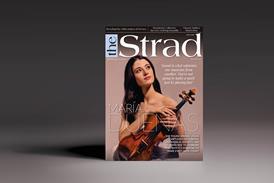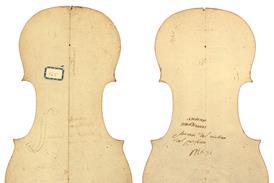Antonio Lysy is head of strings at UCLA Herb Alpert School of Music and a teacher at the Heifetz International Music Institute, US. Here he provides exercises to help you play in tune every time you put your finger on the string

Explore more Technique articles like this in The Strad Playing Hub
The following article is published as part of a larger Technique feature by Antonio Lysy in The Strad’s March 2017 issue.
My father, a violinist, was extremely strict about intonation. He used to say, ‘Bad intonation is like accepting living with a bad smell, or uncleanliness. You get used to it but nobody around you likes it!’ He would talk about it non-stop, to the point that his students were afraid to put their fingers down anywhere at all. We were obliged to find a fail-safe system, requiring discipline, patience and confidence, to win over that fear. That’s what I did. Sometimes I’ll tell students that their intonation is like milk that’s just one day out of date: it is still acceptable, but only barely. I try to help them understand how beautiful it is to play in tune, using analogies and keeping my theoretical explanations as simple as possible.
If you practise the below two-phase system frequently and carefully, even if only for short amounts of time, your overall intonation will improve immensely.
EXERCISES
This system for working on intonation is simple but requires discipline, and it should be practised as early as possible in every student’s studies. In phase one, the fingers help the ear to do all the work; in phase two, the ear disciplines the fingers. Once you have practised both phases, you will reach a third phase automatically, by doing phases one and two simultaneously.
You can practise these phases using any material – scales, or a passage from a piece of music or a study, for example. To start with, I would recommend using simple exercises that don’t require shifts, but as long as you play slowly, it doesn’t matter what notes you’re using. Just make sure that you are listening and allowing your ear to develop a concept of pure intonation.
WELL-TEMPERED INTONATION
We will start with well-tempered tuning, since that is mainly what we use when playing with piano accompaniment. To understand the concept of well-tempered tuning, or equal temperament, play an E in first position on the D string, double-stopped with an open G. Now play the same E with an open A. The pitch of the E has to change drastically to ring perfectly with each string. Find a midpoint that is acceptable to both, to ‘equalise’ the pitch.
PHASE ONE: LISTEN
Spend 15 minutes every day doing this listening exercise to help purify and cleanse the ears:
*Play a short passage of your choice. Check each fingered note against an open string, as shown in exercise 1. It will often be easier to hear the tuning if you alternate between the open string and the fingered note, rather than playing both together.

*If the note that you need to check doesn’t ‘fit’ harmonically with the adjacent open strings, lift your fingers to check it against the string you are on. Keep your fingers in position if possible, and allow them to search for the centre of each note.
This article was published as part of a larger Technique feature by Antonio Lysy in The Strad’s March 2017 issue.
Read: Where should string players look when performing from memory on stage?
Read: The 3-points practicing routine: Description - Action - Result
Explore more Technique articles like this in The Strad Playing Hub
The number one source for playing and teaching books, guides, CDs, calendars and back issues of the magazine.
In The Best of Technique you’ll discover the top playing tips of the world’s leading string players and teachers. It’s packed full of exercises for students, plus examples from the standard repertoire to show you how to integrate the technique into your playing.
The Strad’s Masterclass series brings together the finest string players with some of the greatest string works ever written. Always one of our most popular sections, Masterclass has been an invaluable aid to aspiring soloists, chamber musicians and string teachers since the 1990s.
American collector David L. Fulton amassed one of the 20th century’s finest collections of stringed instruments. This year’s calendar pays tribute to some of these priceless treasures, including Yehudi Menuhin’s celebrated ‘Lord Wilton’ Guarneri, the Carlo Bergonzi once played by Fritz Kreisler, and four instruments by Antonio Stradivari.
































No comments yet